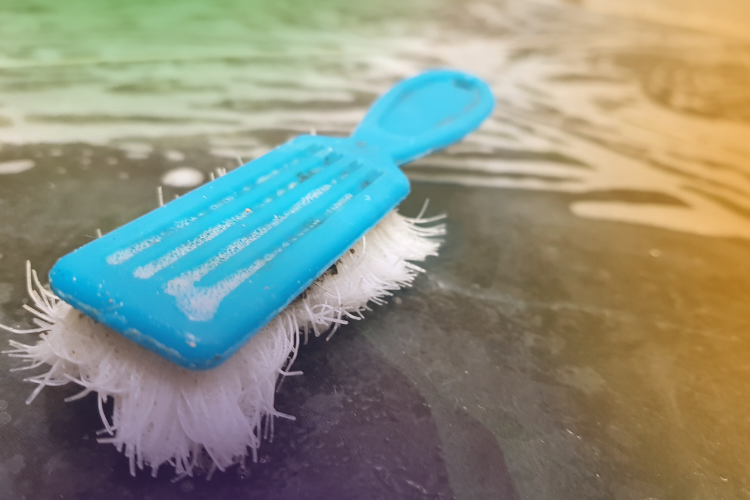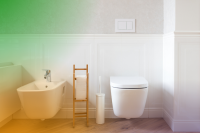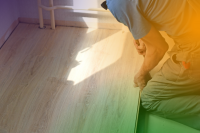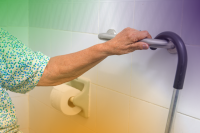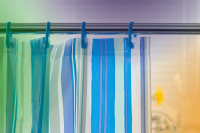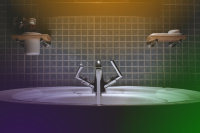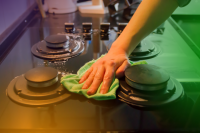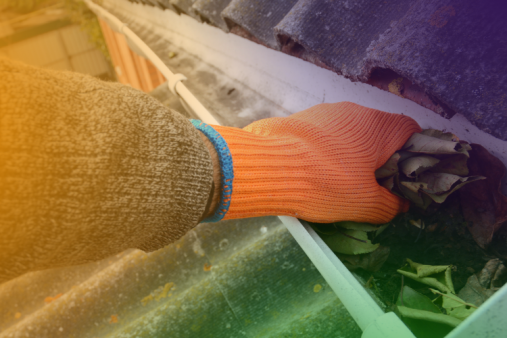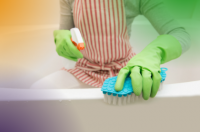Beat the Limescale in the Bathroom
Limescale can be one of the trickiest problems to deal with in a bathroom. It not only looks unsightly, it can give an air of grubbiness even when your bathroom is kept sparkling clean. Tackling limescale can be an ongoing challenge for people living in hard-water areas and if you take your eye off the ball it can soon build-up to the level where it’s actually causing damage to your plumbing. If you’re not quite sure what limescale is and how to deal with it, we’ll take you through the basics in this guide.
What Is Limescale Anyway?
Scientists will be able to tell you that limescale is actually mostly composed of calcium carbonate. Limescale forms in hard water areas and is left behind when water evaporates. You’ll see the tell-tale build-up on the element of your kettle, and it will also be forming on the inside of pipes and in your boiler, in fact, anywhere you’d find warm water. In the domestic bathroom, you’ll find it on taps, plugs and shower heads.
So Is Limescale Dangerous?
Limescale isn’t toxic, but it can crack pipes, cause blockages and stop your appliances working as efficiently as they might. As limescale builds up it narrows the space for the water to flow through which can mean that your toilet doesn’t flush as well as it used to, or that you start to notice that the pressure of the water out of the tap is a lot less. In small doses, limescale doesn’t pose a health risk for your family. It can dry out your skin though, especially if you’re fond of spending a long time under the shower, or soaking in the tub.
Cleaning Limescale
Every supermarket will have a huge range of anti-limescale products to deal with stubborn deposits in the bathroom. Some of these are fairly heavy on the chemicals, and the fumes can be substantial in a small bathroom space. Luckily, there are plenty of natural alternatives which are kinder on the environment, and on your nostrils too.
Think back to your high school Chemistry lessons and what you learned about acids and alkalis. Limescale, or calcium carbonate, is an alkali. If you can get it into contact with an acid, then the chemical reaction will loosen the limescale deposits and make them so much easier to remove. The best things to use for cleaning limescale in your bathroom are white vinegar or lemons, either whole or juice. You will also need other supplies such as cotton wool, some plastic sandwich bags, elastic bands and some old cloths.
Removing Limescale from Taps
If you have limescale on your bathroom taps, then the best way to remove it is by using vinegar or lemon juice. Your aim is to get the acid from the lemons or vinegar into contact with the body of the tap as well as with the spout where the water comes out. Fill a sandwich bag with lemon juice or vinegar, and secure it over the tap with an elastic band to keep the limescale in contact with the liquid. Alternatively, soak cotton wool in vinegar or lemon juice and wrap this around the tap outlet instead. Do this before you go to bed and leave it overnight; by the time you get up in the morning the solution should have loosened the limescale. A quick scrub with a standard all-purpose cleaner should be all that is needed to get rid of anything remaining.
This soaking in acid method isn’t suitable for all taps. If you have taps which are plated in gold or chrome you’ll have to find another method of removing the limescale as the acid can damage the plating on the surface of the taps.
Dealing With Limescale on the Toilet
Although vinegar works just as well as more expensive cleaning products on your toilet, you’ll have to take a different approach as the submerging it in a plastic bag isn’t going to work here. If you do choose to use one of the off the shelf products, then read the instructions for use carefully. Often, they require good ventilation in the room so leave a window open as they work. You will also need a pair of rubber gloves to protect your skin.
Vinegar can be used to remove limescale stains from the toilet bowl, and the approach you take will depend on the severity of the problem. For smaller areas of limescale, mix up a solution of vinegar and water in a spray bottle, and use it to spray the deposits on the toilet bowl. If you have larger deposits of limescale, carefully pour a whole bottle of white vinegar around the toilet bowl and allow it to sit overnight before flushing it all away in the morning.
For really stubborn deposits of limescale, you might have to get some sandpaper. Sandpaper can be used to carefully sand away the surface of the limescale, taking care not to scratch the china of the bowl underneath. Once you have got rid of most of the limescale using the sandpaper, you can then try to get the rest off using vinegar or other products.
Dealing With Limescale Inside Pipes
Dealing with limescale which you can see on the toilet or taps is one thing, but limescale will also be building up inside pipes in places you can’t see. Over time, the limescale will make the pipes narrower and narrower, and eventually, block them completely. Once your pipes get to this stage of damage, there isn’t much you can do apart from have them replaced. There are however things you can do to stop the pipes getting to that stage in the first place.
There are lots of commercial products which will deal with limescale inside pipes, but you can achieve the same end result with your vinegar, with the addition of baking soda. This chemical free solution is kind not only to the environment, but useful for homes where people have allergies, young children or pets using the bathroom too. Measure out eight litres of cheap white wine vinegar and get a tub of baking soda from the supermarket – you’ll find it with the flour and yeast.
First, put the baking soda down the plughole if the bath or the sink. This is a lot easier if you can remove the waste from your sink or bath entirely. Then slowly pour the vinegar solution down the drain too. As the vinegar hits the baking soda, it will cause a chemical reaction and will shift the limescale deposits from the interior of the pipes. Leave the solution to work for at least four hours, or overnight. Clear the drains by pouring a kettle of boiling water down the drain, as this will help wash away any chunks of limescale or grease deposits which have been dislodged by your vinegar and baking soda.
Limescale on a Shower Head
Limescale on a a shower head can seriously affect its performance, with water squirting out in every direction, or the pressure dipping over time. Vinegar and lemon juice will work wonders on your shower head too. Start by removing your shower head; often this is just a case of unscrewing the shower head and you won’t need to switch the water off first. Find a large tub, bucket or pan which is big enough to submerge the shower head in warm water. Fill the tub with warm water to cover the shower head, and then add either vinegar or lemon juice – fresh juice from lemons often seems to work better than ready-made lemon juice in a squeezy bottle bought from the supermarket, and lemon juice will work more quickly than vinegar too. Leave the shower head to soak in the tub or pan for at least 30 minutes. If you see no improvement after that time, change the water and add more vinegar or lemon juice into the mix. Using an all-purpose cleaner and a sponge, scrub the rest of the limescale off the shower head and replace.
Preventing Limescale Formation
Cleaning off limescale can be tricky, but immediately after cleaning the limescale will start to build up again. One option is to add a water softening unit into the mains supply coming into the house. These aren’t cheap though, with a basic unit coming in at around £500, with fitting costing extra. These units will soften the water coming out of one tap only, and is usually fitted to a main kitchen tap providing water for drinking, cooking and for filling taps and kettles. Water can also be filtered through smaller jugs with cartridges for drinking, but this isn’t practical for showers or baths. If you find that dealing with limescale is becoming a full time task, then speak to your plumber or water supplier to see what they can suggest to make life easier.
